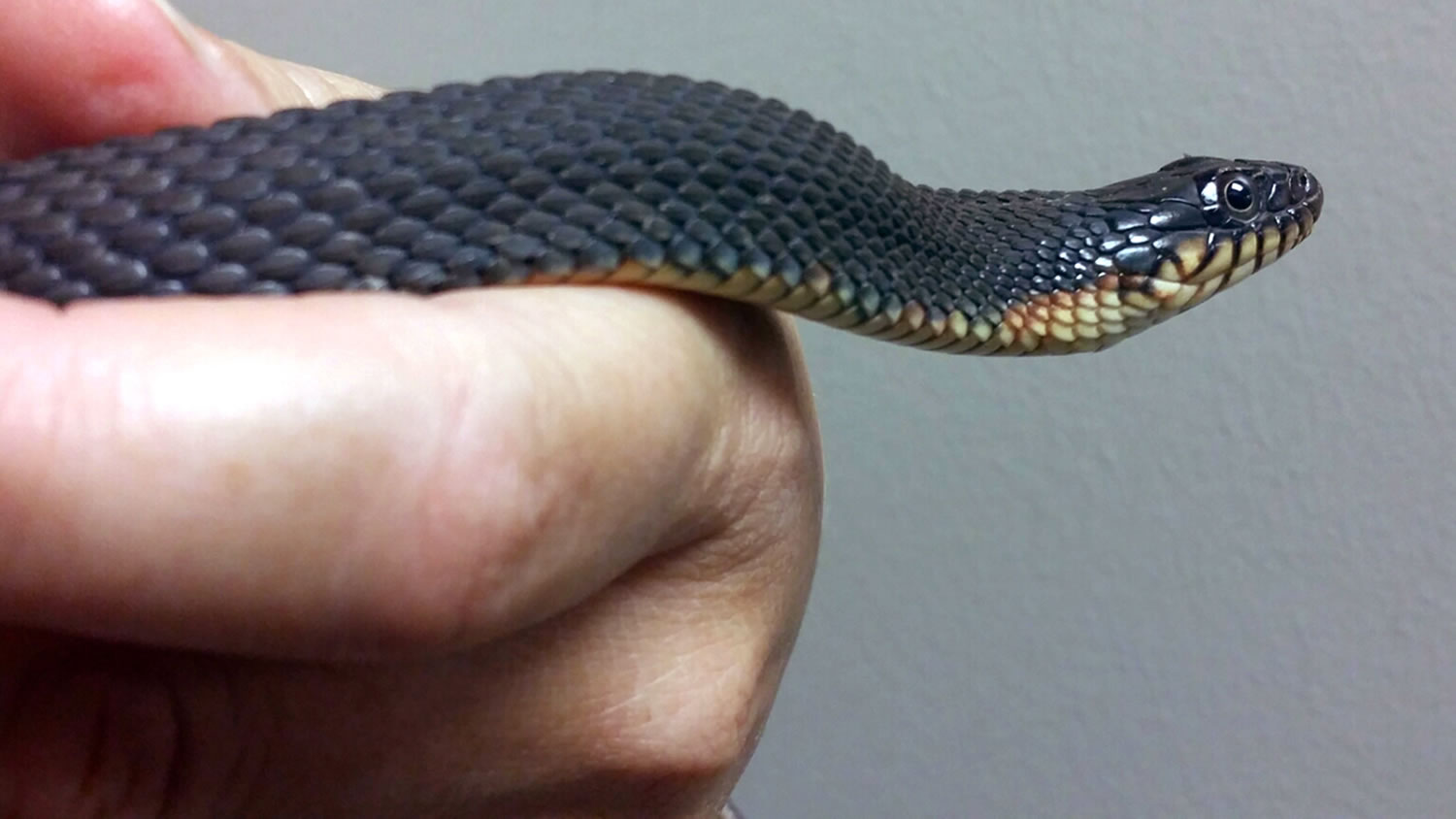ST. LOUIS — For the second time in two years, a captive snake in Missouri has given birth without any interaction with a member of the opposite sex.
Officials at the Missouri Department of Conservation’s Cape Girardeau Conservation Nature Center say a yellow-bellied water snake reproduced on her own in 2014 and again this summer. The snake has been living in captivity without a male companion for nearly eight years. An intern who cares for the snake found the freshly laid membranes in July. This year’s offspring didn’t survive, but the two born in 2014 are on display at the nature center about 100 miles south of St. Louis.
Herpetologist Jeff Briggler said virgin births are rare but can occur in some species through parthenogenesis. It occurs in some insects, fish, amphibians, birds and reptiles, including some snakes, but not mammals.
Parthenogenesis is a type of asexual reproduction in which offspring develop from unfertilized eggs. It’s caused when cells known as polar bodies, which are produced with an animal’s egg and usually die, behave like sperm and fuse with the egg, triggering cell division.
The conservation department said there are no other documented cases of parthenogenesis by a yellow-bellied water snake. Like other water snakes, this species gives birth to live young rather than eggs that hatch.
Robert Powell, a biology professor and snake expert at Avila University in Kansas City, said the Brahminy blind snake — a small burrowing animal native to Southeast Asia and commonly known as the flowerpot snake — has long been the only known snake that routinely reproduces without a male contribution.
In the Missouri case, it’s possible — but unlikely — that the snake stored sperm from her time in the wild. But Michelle Randecker, a center naturalist, said eight years is too long. Powell agreed, saying a female snake usually can’t store sperm for more than a year, although there are accounts of successful storage as long as three.
“Long-term storage is unusual. When you run into situations like this, you always wonder, ‘Is that a possibility?’ ” he said. “If nothing else, it’s an interesting phenomena.”
A.J. Hendershott of the conservation department said there was some pride in having the first snake of its species reproduce through parthenogenesis.
“When you keep things in captivity,” Hendershott said, “you learn things about what they’re capable of.”



